Wednesday 20 September, 2006, 12:08 - Licensed
 As anyone who has bought a new television in the UK in the past year or so will know, it is the Government's intention to close down all analogue TV transmitters by the end of the year 2012. It's main reason for doing this is to release some of the channels used for broadcasting so that they can be used for 'new users' (presumably ones that they see as being more lucrative!)
As anyone who has bought a new television in the UK in the past year or so will know, it is the Government's intention to close down all analogue TV transmitters by the end of the year 2012. It's main reason for doing this is to release some of the channels used for broadcasting so that they can be used for 'new users' (presumably ones that they see as being more lucrative!)The plan is for a rolling conversion of all television transmitters in the country to change from analogue to digital. In doing this, of the four existing analogue frequencies used to carry BBC1, BBC2, ITV1 and Channel 4, only three of these will continue to be used - one will be freed for the aforementioned mysterious new users. The three frequencies still in use will carry three digital mulitplexes ensuring national provision of all BBC, ITV, Channel 4 services including CBBC, BBC News 24, ITV2, ITV3, E4 and so on, so there's no need to worry about people losing their favourite programmes. At the 80 transmitter sites that already carry digital services of the 4 (or 5) analogue frequencies in use and the 6 digital frequencies in use, only 6 will remain in use, the remainder falling into the pot of those available for other users.
Once the digital switch-over (as it's know) is complete, only UHF channels 21 to 30 and 41 to 62 will still be available for television broadcasting. Channels 31 to 40 and 63 to 68 (and possibly 69) will be freed for new users. The diagram below illustrates this situation. 'S.A.B.' represents services ancilliary to broadcasting (sometimes known as programme making and special events) and includes radiomicrophones, talkback, remote control for cameras, point-to-point audio links - i.e. radio equipment used by people making programmes. Channel 69 is shown hashed as it's not yet clear whether or not it will be given over to new users or remain with S.A.B.
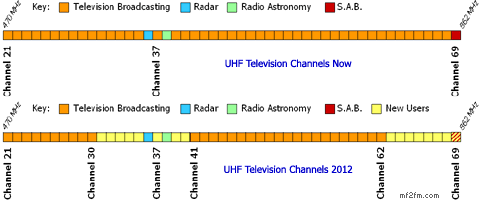
So how can the necessary channels be crammed into two-thirds of the original spectrum? There are now approximately 5,200 individual television transmitters on-air in the UK amounting to around 115 transmitters per available UHF TV channel. After switch-over the number of transmitters will be reduced to around 3,800 - but this has to be squeezed into only 32 channels amounting to around 118 transmitters per channel. So the number of transmitters per channel remains roughly the same, and therefore, in theory, planning the new network should be no more difficult than planning the old one was.
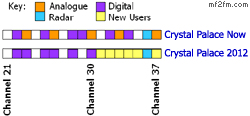 Let's take a look at a practical example, using the Crystal Palace television transmitter site which serves around 12 million people in and around London. At present channels 23, 26, 30, 33 and 37 are used for analogue transmissions and channels 22, 25, 28, 29, 32 and 34 are used for digital. Of these, channels 32, 33, 34 and 37 will no longer be available for broadcasting after switch-over as they are part of the channels set aside for new users.
Let's take a look at a practical example, using the Crystal Palace television transmitter site which serves around 12 million people in and around London. At present channels 23, 26, 30, 33 and 37 are used for analogue transmissions and channels 22, 25, 28, 29, 32 and 34 are used for digital. Of these, channels 32, 33, 34 and 37 will no longer be available for broadcasting after switch-over as they are part of the channels set aside for new users. So after switch-over, a combination of the existing analogue and digital channels (i.e. channels 22, 23, 25, 26, 28 and 30) will be used for the purely digital service. Thus the future all-digital transmissions can be squeezed into the remaining broadcasting channels at this particular transmitter site.
 This situation is also fine at the majority of UK transmitter sites including the smaller ones as typically at least 3 of the 4 channels in use at these smaller sites will fall within the untouched broadcast spectrum. Some jiggery-pokery will be necessary at a small number of sites to squash services into the remaining channels but all-in-all the plan works!
This situation is also fine at the majority of UK transmitter sites including the smaller ones as typically at least 3 of the 4 channels in use at these smaller sites will fall within the untouched broadcast spectrum. Some jiggery-pokery will be necessary at a small number of sites to squash services into the remaining channels but all-in-all the plan works!The question remains as to what 'new uses' might be made of the freed spectrum. One possiblity is that it might be used for more digital television (maybe mobile TV, portable TV or HD-TV). It might be used for more celluar services (maybe 4G). It might be used for mobile delivery of wireless broadband (maybe using 802.20). Some of it might be needed to house all the displaced S.A.B. users who currently occupy channel 69 (and to a lesser extent also heavily occupy channels 63 to 68). At present it's anyone's guess as to the need for and use of this spectrum but one thing is for certain, the UK Government will be rubbing their hands together in glee at the potential for raising a pot of gold for selling it.
add comment
( 1221 views )
| permalink
| 



 ( 1.9 / 279 )
( 1.9 / 279 )




 ( 1.9 / 279 )
( 1.9 / 279 )
Thursday 13 July, 2006, 08:36 - Licensed
Driving along the M4 motorway yesterday evening, I was trying to listen to the news on BBC Radio 4. As usual, the RDS Alternative Frequency (AF) service was doing a good job at re-tuning my radio to a new transmitter once I disappeared out of the coverage of the one I was tuned to. Not long into my journey I noticed that my radio was struggling to find a clear frequency and that even the best it could find was swamped by interference. Having experienced this before, I wondered whether there might be Sporadic-E propagation around. A quick tune to the low end of the FM band confirmed there was.Sporadic-E propagation exists when the sun's radiation ionises layers of gas in the 'E'-layers of the ionosphere. These ionised layers refract radio signals, often up to high VHF frequencies, enabling signals from far afield to be easily received. Usually such ionisation forms in relatively small 'clouds' such that the signals which are refracted in any one area might differ significantly from those received in another. Often from any given point the signals received are from one specific area.
It can be fun tuning around the FM band at times when Sprodic-E is active as stations from typically 1,000 or more miles away can swamp local stations. With the advent of RDS it's also relatively easy to identify the location of the transmitter you are hearing. A good place to listen (in the UK) is the bottom end of the FM band (87.5 - 88.0 MHz) where, unless there is a local RSL station active, there tends to be nothing but static. This is also the frequency range that is first to respond when the Sporadic-E clouds are around. Yesterday, for example, the highest frequency on which I could hear foreign stations was around 90 MHz.
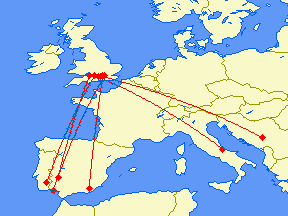 On my journey yesterday I logged the following stations (the location has been added in after a brief web-search). The map on the right shows the path between me and these stations - you can pretty much see that there must have been 2 'clouds' (one over the Bay of Biscay and the other somewhere near Austria) and how the areas where signals were received from are similar:
On my journey yesterday I logged the following stations (the location has been added in after a brief web-search). The map on the right shows the path between me and these stations - you can pretty much see that there must have been 2 'clouds' (one over the Bay of Biscay and the other somewhere near Austria) and how the areas where signals were received from are similar:87.6 Radio Speranza (Pescara, Italy)
87.7 Antena 1 (Mendro, Portugal)
87.7 HRT HR-1 (Pljesvica, Croatia)
87.8 RNE-3 (Baza, Spain)
87.9 Canal Extremadura (Merida, Spain)
88.0 RNE-5 (probably Huelva, definitely Spain!)
There was also a very strong Spanish station on 88.5 MHz but it never quite registered its RDS and as such remains a mystery! There were also other stations fading in and out, many Spanish, some Italian and Portuguese and a few French, however none were receivable long enough to register their name or RDS.
None of this is particularly amazing.
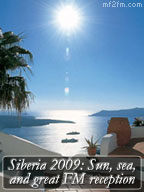 Sproadic-E propagation is common, especially during the summer months. However, it is most common at the height of the sun's 11 year solar cycle. At the moment, though, the sun is at the lowest point of its 11 year cycle. And radio amateurs monitoring the 6 metre amateur band have also regularly experienced enhanced propagation over the past 2 months. This shouldn't really occur. It might be that the sun has been a bit more lively than it should have been - I'm useless at interpreting the complex solar data - but those that do can tell me that the recent conditions are not normal. So what is going on? My own theory, for what it's worth, is that propagation conditions are not just a function of the sun's activity but are also connected to weather conditions here on Earth. This year in the UK we've had at least 3 weeks of weather where temperatures were 10C above the seasonal norm. Could global warming also be playing havoc with radio propagation? If anyone has a few hundred thousand pounds to spare, I would be happy to investigate further!
Sproadic-E propagation is common, especially during the summer months. However, it is most common at the height of the sun's 11 year solar cycle. At the moment, though, the sun is at the lowest point of its 11 year cycle. And radio amateurs monitoring the 6 metre amateur band have also regularly experienced enhanced propagation over the past 2 months. This shouldn't really occur. It might be that the sun has been a bit more lively than it should have been - I'm useless at interpreting the complex solar data - but those that do can tell me that the recent conditions are not normal. So what is going on? My own theory, for what it's worth, is that propagation conditions are not just a function of the sun's activity but are also connected to weather conditions here on Earth. This year in the UK we've had at least 3 weeks of weather where temperatures were 10C above the seasonal norm. Could global warming also be playing havoc with radio propagation? If anyone has a few hundred thousand pounds to spare, I would be happy to investigate further!Wednesday 22 March, 2006, 10:16 - Licensed
According to Isle of Mann International Broadcasting (IOMIB) around 75% of radios have the long wave band on them. But when was the last time you tuned into long wave? For the cricket coverage on BBC Radio 4? Or when Atlantic 252 was pumping out its 'You're never more than a minute away from the next minute' style of upbeat pop music? Other than that, unless you live outside the UK and keep in touch by listening to Radio 4, you probably rarely switch your radio to the 'LW' setting. But there are a number of broadcasters who are banking that they can start commercial services on long wave and get you to tune in to listen to their programmes - and their advertisements!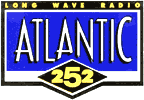 In the mid 1990's when Atlantic 252 was in its heyday, three other companies figured that they too could launch successful long-wave radio services for the UK. Of the three, two are still planning their launch nearly 10 years later and one has given up. A combination of political, financial and environmental obstacles have prevented any of the three stations from finally getting on-air and a question has to hang over the two who still have plans as to whether they will ever launch.
In the mid 1990's when Atlantic 252 was in its heyday, three other companies figured that they too could launch successful long-wave radio services for the UK. Of the three, two are still planning their launch nearly 10 years later and one has given up. A combination of political, financial and environmental obstacles have prevented any of the three stations from finally getting on-air and a question has to hang over the two who still have plans as to whether they will ever launch.The aforementioned IOMIB (whose other web-site can be found at longwaveradio.com) plan to launch a service tentively named 'MusicMann279' on 279kHz with a power of 500kW. Their transmitter site was originally planned to be on the mainland of the Isle of Mann, however due to local objections and despite planning to use a Cross-Field Antenna which is much smaller than a conventional antenna (and some would argue that its performance is in proportion to its dimensions), they now plan to build a platform in the Bahama Bank just off the island. There have been various rumours about a possible launch date for the service and plenty of speculation about what kind of service it might be, but so far no real evidence of any progress. There most recent rumours circulating are that the service will launch in the summer of 2006 at reduced power under the name of 'Caroline 279'.
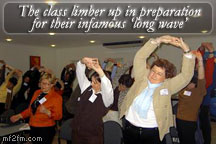 I somewhat doubt this latest rumour as there are a couple of aeronautical navigation beacons (non-directional beacons or NDB's), one near RAF Northolt on 277 kHz and one near RAF Lyneham on 282 kHz which are still in operation and in daily use. The interference to these beacons from the proposed Isle of Mann service would be so strong that they would have to change frequency and... they haven't!
I somewhat doubt this latest rumour as there are a couple of aeronautical navigation beacons (non-directional beacons or NDB's), one near RAF Northolt on 277 kHz and one near RAF Lyneham on 282 kHz which are still in operation and in daily use. The interference to these beacons from the proposed Isle of Mann service would be so strong that they would have to change frequency and... they haven't!The station which has now given up the ghost was known as variously 'Delta 171' or 'The Lounge' and was intended to provide an adult orientated middle-of-the-road, 'BBC Radio 2' style service, broadcasting out of the Netherlands. In the same way as in the Isle of Mann, there were local environmental objections to having a 500kW (half a MegaWatt!) transmitter on the doorstep so Delta was forced to consider a platform in the North Sea. This proved too expensive and the project collapsed in 2000 when the licence for the long wave frequency which had been awarded by the Dutch regulator expired and was not renewed.
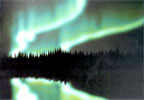 The final station which still claims to be planning a launch is 'Cruisin 216' which will carry Christian programming. Cruisin intends to operate out of southern Norway to put its signal into the UK, however the frequency they have of 216 kHz is shared with Radio Monte Carlo (RMC-Info) who use a powerful 1.4 MegaWatt transmitter from Roumoules in south western France. Cruisin's own web-site indicates that their signal in London will be approximately 13dB (20 times) stronger than that from RMC-Info, however the same article on their web-site also shows that this is insufficient for interference not to be a problem. The fact is that the RMC transmitter already puts in a good and listenable signal into London and most of the south eastern corner of England so the signal from Norway would have to be whopping to compete. In Scotland and the north of England they might stand a chance - of course being a religious station, there may be someone up there lending them a helping hand!
The final station which still claims to be planning a launch is 'Cruisin 216' which will carry Christian programming. Cruisin intends to operate out of southern Norway to put its signal into the UK, however the frequency they have of 216 kHz is shared with Radio Monte Carlo (RMC-Info) who use a powerful 1.4 MegaWatt transmitter from Roumoules in south western France. Cruisin's own web-site indicates that their signal in London will be approximately 13dB (20 times) stronger than that from RMC-Info, however the same article on their web-site also shows that this is insufficient for interference not to be a problem. The fact is that the RMC transmitter already puts in a good and listenable signal into London and most of the south eastern corner of England so the signal from Norway would have to be whopping to compete. In Scotland and the north of England they might stand a chance - of course being a religious station, there may be someone up there lending them a helping hand!Thursday 9 March, 2006, 15:24 - Pirate/Clandestine
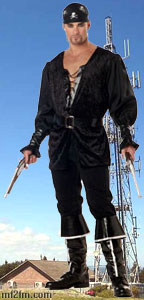 With all this talk of pirate radio, a question that often gets asked is, "But I've never heard a pirate station; where do I find one?". Yes, there are those who have yet to stumble across the skull and crossbones of the airwaves!
With all this talk of pirate radio, a question that often gets asked is, "But I've never heard a pirate station; where do I find one?". Yes, there are those who have yet to stumble across the skull and crossbones of the airwaves!The best place to look is on the FM dial of your radio. But with so many stations around, how do you know if the station you are listening to is a pirate or a legal station? There are a few clues which even the least experience listener should be able to fathom:
1. The signal is in mono. Most pirate stations broadcast in mono, however, this is not at all conclusive as many RSL stations do this too and further, some pirates broadcast in stereo.
2. There is no RDS. Including RDS can be complicated for some pirates so they choose not to use it. This is still not totally conculsive though, as some RSL stations have no RDS either.
 3. The RDS is 'scrolling' (i.e. it is changing to display a message - as shown here on the right). Legal stations in Europe are obliged by the European Commission to use a static name on their RDS display to make sure drivers aren't distracted. Pirates, however, can change the name of the station to display messages on RDS equipped radios. A few legal stations (not in the UK though) do scroll or rotate the message on the RDS display so this too isn't totally conclusive, however reading the message might give a good indication. If it's advertising a party at a local night club then chances are you're listening to a local pirate!
3. The RDS is 'scrolling' (i.e. it is changing to display a message - as shown here on the right). Legal stations in Europe are obliged by the European Commission to use a static name on their RDS display to make sure drivers aren't distracted. Pirates, however, can change the name of the station to display messages on RDS equipped radios. A few legal stations (not in the UK though) do scroll or rotate the message on the RDS display so this too isn't totally conclusive, however reading the message might give a good indication. If it's advertising a party at a local night club then chances are you're listening to a local pirate!4. The presenter doesn't have a middle-class accent! This is especially true on FM stations in the UK, where legal stations try to recruit presenters with unoffensive voices that won't turn listeners off. As pirate stations are usually there to promote the music or club nights, whether the presenter can pronounce 'Douglas St.John Farquhar' correctly really doesn't matter!
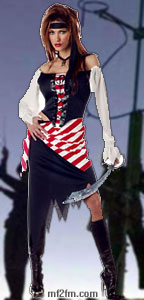 5. The phone number being given out to contact the station is a mobile number (all mobile numbers begin with '07' in the UK). How many legal stations do you know who would, or would need to, use a mobile number for calls to the studio? Further, if you're requested to leave 'missed calls', i.e. to phone the number but not let it answer, you're almost certainly onto a pirate. This is a way to show you are listening without having to spend a single penny on phone calls - quite smart really!
5. The phone number being given out to contact the station is a mobile number (all mobile numbers begin with '07' in the UK). How many legal stations do you know who would, or would need to, use a mobile number for calls to the studio? Further, if you're requested to leave 'missed calls', i.e. to phone the number but not let it answer, you're almost certainly onto a pirate. This is a way to show you are listening without having to spend a single penny on phone calls - quite smart really!Of course there are other clues, such as the frequency being used (if it's in the middle of the band used for national BBC stations but isn't a BBC station then it's most likely a pirate), but the ones above don't require any technical knowledge. You're more likely to find a pirate station on FM if you live in, or near, a major city than if you live out in the countryside, but you might be surprised.
Another place to find pirates is in the radio no man's land just at the edges of the normal short-wave broadcast bands, especially the lower frequency bands. Why the lower frequency bands in particular - they're better for broadcasting to nearby areas and tend to be more reliable throughout the daily propagation cycle. Good places to listen for pirate short-wave stations are:
* 3800-3950 and 4000-4100 kHz, either side of the 75m broadcast band
* 5750-5900 and 6200-6400 kHz, either side of the 49m broadcast band
* 6800-7000 and 7350-7600 kHz, either side of the 41m broadcast band (avoiding the 40m amateur band too)
* 9300-9400 and 9900-10000 kHz, either side of the 31m broadcast band
And so on either side of the other short wave broadcast bands too... Though the use of frequencies above about 10 MHz is rarer, there are examples such as Alfa Lima on 15070 (± a bit) and 21900 (± a bit) kHz and WR International on 12256 kHz.
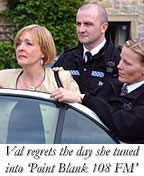 One final place you might come across a pirate station is on the medium wave (MW) band. Most stations prefer FM for local broadcasting as the antennas are smaller and the equipment easier to get hold of, but a few stations do use MW. Radio Free London used to put out a good signal across London on 819 kHz and there are quite a few stations (particularly in continental Europe) who inhabit the no man's land just off the end of the MW band between 1611 and 1640 kHz.
One final place you might come across a pirate station is on the medium wave (MW) band. Most stations prefer FM for local broadcasting as the antennas are smaller and the equipment easier to get hold of, but a few stations do use MW. Radio Free London used to put out a good signal across London on 819 kHz and there are quite a few stations (particularly in continental Europe) who inhabit the no man's land just off the end of the MW band between 1611 and 1640 kHz.Of course I couldn't possibly condone any activity which would lead you to listen to a pirate and thus break the law in doing so. But at least now you might be able to stop yourself from committing this heinous crime before you get caught!

